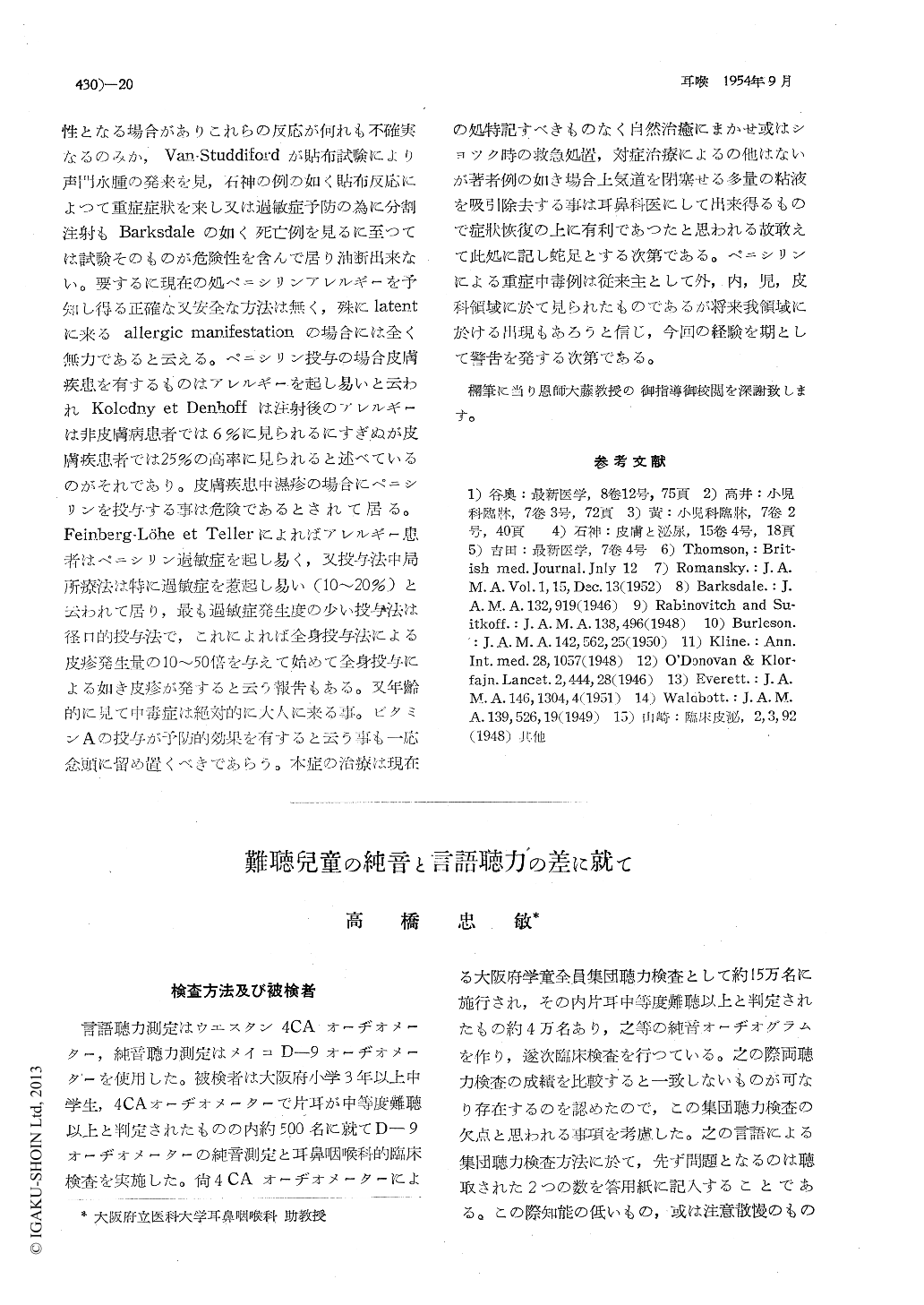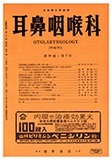- 有料閲覧
- 文献概要
- 1ページ目
要約
4CAオーヂォメータによる学童の集団言語聴力検査威績とD-9オーヂオメーターによる各個人の純音オーヂオグラムの比較を難聴疾患別に観察した。感音性難聴と思われるもの,中耳手術後の難聴音の言語聴力と純音言語周波域聴力は略一致したが,被検者が学童であるため患児数が少く決定的結果は得られない。鼓膜穿孔を有する慢性中耳炎の両聴力は梢々一致した。耳管疾患,鼓膜穿孔以外の中耳炎後遺症,耳垢栓塞は一致しない場合が可なりあつた。それで最も症例の多い穿孔性慢性中茸炎と耳管疾患者の両種聴力の比較と言語聴力検査答の誤聴,正聴等を更に詳細に検べた。その結果耳管疾患児の純音中等度難聴者は言語聴力が穿孔性慢性中耳炎より良い事が多いのを認めた。然しそれにもかかわらず言語を誤聴することも亦多い。従つて学童耳管疾患者の言語を正しく聴取し得る聴力は純言聴力検査成績と一致しない場合が穿孔性慢性中耳炎児童より多い結果を得た。
長谷川教授の御指尊,御校閲を深謝する。
TAKAHASHI finds that, by making examination of number of children in the primary grades with use of 4CA and D9 audiometers whose losses are due to perforated ear drums or obstructive lesions of the Eustachian tube, there is a corresponding diminution of hearing in both, the speech and pure tone when that loss is due to perforated drum. But, when it is due to obstructive lesion in the Eustachian tuba the results of these two tests, speech and pure tone hearing, are more apt to be in disagreement than by being in agreement. Patients with obstructive lesions are enabled to hear speech better than those of the other group who are equally affected with a considerable amount of loss as tested by pure tone hearing but, there are greater tendency among them to misinterpret the words that are heard.

Copyright © 1954, Igaku-Shoin Ltd. All rights reserved.


